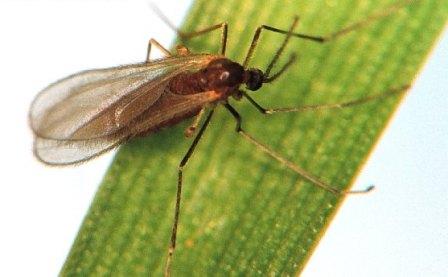|
Hessian Fly
View more pictures: Bing Images Google Images Yahoo Images Common names: Hessian Fly Scientific name: Mayetiola destructor Region: Wheat-growing regions of North America and Europe Life cycle: Normally two broods per year - Spring (March) and Fall (October). There may be three to five generations under ideal conditions. Physical Description: The adult is black; the abdomen of the female is reddish orange. The eggs are reddish laid in the grooves on the upper side of leaves. The larva is reddish when it first emerges and turns a whitish color as it matures - .2 inches long. Feeding characteristics: This Fly is perhaps the most destructive pest of Wheat. The larva works it way down to the lower part of the plant, usually below the soil level. There it begins to suck the plant juices. Once this occurs the weaken plant falls over, which might be mistaken for lodging. Controls: The best control is to time your plantings after the eggs have hatched and the fly is not active. Check with your local Agricultural County Extension agent for the "Fly Dates" in your area. Hessian pest resistant Wheat varieties are: Return from Hessian Fly to Insects E-H Encyclopedia of Garden Insects |
